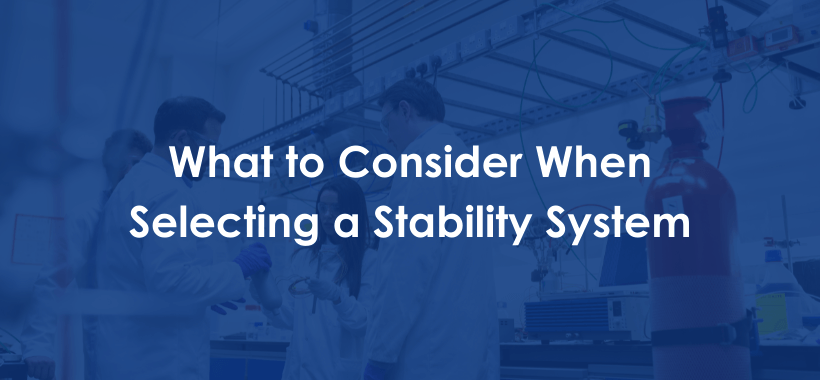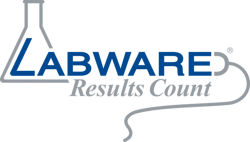
In the realm of LIMS stability testing, efficient management and accurate analysis are critical for ensuring product quality and regulatory compliance. Traditional methods often fall short in providing a streamlined workflow, resulting in wasted resources and increased chances of errors. This blog post delves into the importance of an effective stability system, highlighting the limitations of conventional approaches while emphasizing the benefits offered by Laboratory Information Management Systems (LIMS).
As you read further, you will gain insights on maintaining chain of custody with a LIMS, key features to consider when selecting a stability system, assessing vendor support & training services, and evaluating scalability & flexibility. By implementing a robust LIMS solution for your stability testing needs, your organization can optimize resource utilization and ensure adherence to industry standards.
The Importance of an Effective Stability System
As a critical component in pharmaceutical product development, an effective stability system is essential to avoid failed products, penalties, and even potential shutdowns. Traditional methods like Excel spreadsheets can quickly become overwhelming and lead to problems across all real-life use cases. In this section, we will discuss the importance of having a reliable stability testing management solution in place.
Avoiding Failed Products and Penalties
Regular stability testing is crucial for ensuring that pharmaceutical products maintain their quality throughout their shelf life. Failure to perform these tests accurately or consistently may result in substandard products reaching the market, which could lead to recalls or regulatory penalties. By implementing a robust Laboratory Information Management System (LIMS), companies can ensure accurate data collection and analysis while reducing human error risks associated with manual processes.
Mitigating Potential Shutdowns
In addition to financial consequences from failed products or regulatory fines, inadequate stability testing systems may also put your company at risk for operational disruptions. If regulators find significant gaps in your organization's compliance with Good Manufacturing Practices (GMP) guidelines related to stability studies, they might impose temporary closures until corrective actions are taken. Adopting an efficient LIMS helps you stay compliant by streamlining workflows and maintaining comprehensive documentation of all test results.
Better Resource Forecasting & Allocation
- Data-driven decisions: A modern LIMS provides insights into resource utilization trends allowing managers to make informed decisions about allocating resources effectively for future projects.
- Faster response times: Automated alerts within the LIMS notify relevant personnel of any deviations from predefined stability testing schedules, enabling swift corrective actions and minimizing potential delays in product release.
Improved Collaboration & Communication
An effective LIMS also facilitates better communication among team members by providing a centralized platform for sharing test results, protocols, and other essential information. The collaboration among team members is essential for meeting regulatory needs and upholding product quality standards; this can be ensured by having a unified platform for sharing data, protocols, etc.
In today's competitive pharmaceutical landscape, having an efficient stability system is more important than ever. By investing in a reliable LIMS solution like LabWare, you can optimize your organization's resources while ensuring compliance with industry regulations and protecting your company's reputation.
Having a reliable and efficient stability system is of paramount importance for organizations; however, traditional methods can be limited in terms of resource forecasting accuracy or potential errors. To ensure that this can be achieved, it is important to understand the limitations of traditional methods such as inefficient resource forecasting with spreadsheets or increased chances of errors in documentation.
Key Takeaway: An effective stability system is crucial in pharmaceutical product development to avoid failed products, penalties, and potential shutdowns. Implementing a robust Laboratory Information Management System (LIMS) helps ensure accurate data collection and analysis while reducing human error risks associated with manual processes. LIMS also provides insights into resource utilization trends allowing managers to make informed decisions about allocating resources effectively for future projects.
Limitations of Traditional Methods
In the pharmaceutical industry, stability testing is a crucial aspect of product development. However, many laboratories still rely on traditional methods like spreadsheets, paper documents, databases, or bespoke proprietary software to manage their stability testing needs. These old-school approaches come with several limitations that can negatively impact the accuracy and efficiency of your testing process.
Inefficient Resource Forecasting with Spreadsheets
One major drawback of using spreadsheets for managing stability tests is the lack of efficient resource forecasting capabilities. As projects grow in complexity and volume, it becomes increasingly difficult to track resources accurately and allocate them effectively across various tasks. This often leads to delays in completing critical tests or misallocation of valuable resources.
Increased Chances of Errors in Documentation
The manual nature of traditional documentation methods makes them prone to human errors. Inaccurate data entry or missing information can lead to incorrect test results and ultimately affect shelf-life predictions for pharmaceutical products. Additionally, these errors may go unnoticed until it's too late - causing significant setbacks during product development stages.
To overcome these challenges associated with conventional techniques, organizations are turning towards Laboratory Information Management Systems (LIMS) as an effective solution for managing their stability testing requirements more efficiently and accurately.
- Better Data Accuracy: A LIMS automates data collection processes which significantly reduces chances for human error while improving overall data quality.
- Easier Collaboration: With a centralized system like LIMS in place, team members can easily access relevant information from anywhere at any time - making collaboration much simpler than before.
- Streamlined Workflows: LIMS offers tools to help you optimize your workflows and ensure that all tasks are completed in a timely manner. This leads to increased productivity and faster completion of stability tests.
In addition, implementing a LIMS can also provide other benefits such as ensuring regulatory compliance, reducing manual labor costs, and enhancing overall operational efficiency. To learn more about how a LIMS can transform your stability testing process, check out this comprehensive guide on the benefits of Laboratory Information Management Systems.
Traditional methods of resource forecasting and documentation are often ineffective, resulting in difficulty tracking the changing requirements of lab work. By implementing a Laboratory Information Management System (LIMS), organizations can benefit from enhanced data accuracy, streamlined workflow management, and improved efficiency.
Key Takeaway: Many laboratories still use traditional methods like spreadsheets, paper documents, databases or bespoke proprietary software to manage their stability testing needs which come with several limitations that can negatively impact the accuracy and efficiency of your testing process. To overcome these challenges associated with conventional techniques, organizations are turning towards Laboratory Information Management Systems (LIMS) as an effective solution for managing their stability testing requirements more efficiently and accurately. LIMS offers better data accuracy, easier collaboration, streamlined workflows while ensuring regulatory compliance and reducing manual labor costs.
Benefits of a Laboratory Information Management System (LIMS)
A trusted LIMS offsets the burden of testing and documentation by improving resource forecasting and effectively managing both processes. It ensures that all information is collected while certifying testing execution which leads to more accurate shelf-life predictions. In this section, we will discuss some key benefits of using a LIMS for stability testing.
Enhanced Data Accuracy through Automation
The use of automation in a Laboratory Information Management System significantly reduces the chances of human error during data entry and calculations. Automated data capture from instruments, barcode scanning, and electronic signatures ensure that all relevant information is accurately recorded without manual intervention. This not only increases efficiency but also helps maintain regulatory compliance with stringent industry standards such as FDA 21 CFR Part 11.
Streamlined Workflow Management
A well-designed LIMS can streamline your laboratory's workflow by automating routine tasks like sample tracking, scheduling tests, generating reports, and sending notifications to stakeholders when results are available or actions are required. By centralizing these functions within one system, you can eliminate redundancies in your process while providing real-time visibility into the status of ongoing stability studies.
- Scheduling: A robust LIMS allows you to create custom schedules for each study based on predefined templates or unique requirements.
- Data Analysis & Reporting: Advanced analytics tools enable users to quickly generate graphical representations of their data sets making it easier to identify trends & outliers affecting product quality over time.
- User Access Control: Role-based access control features ensure that sensitive information remains secure by restricting user permissions according to their job responsibilities within the organization.
By implementing a LIMS, you can improve the overall efficiency of your stability testing program while ensuring data integrity and compliance with regulatory requirements. This will ultimately lead to more accurate shelf-life predictions for your pharmaceutical products.
Additional Resources:
- LabWare LIMS Resources
- FDA Guidance on Stability Testing
- ISPE GAMP 5 Guidelines for Laboratory Systems Validation
The LIMS system provides a host of benefits that enable laboratories to increase accuracy, streamline workflow management and reduce manual labor costs. Maintaining chain of custody with the help of a LIMS is essential for ensuring regulatory compliance and minimizing financial losses due to errors.
Key Takeaway: A Laboratory Information Management System (LIMS) can improve resource forecasting, manage processes effectively and ensure accurate shelf-life predictions. Automation reduces human error during data entry and calculations while streamlining workflow management by automating routine tasks like sample tracking, scheduling tests, generating reports, and sending notifications to stakeholders when results are available or actions are required. A LIMS also enables users to quickly generate graphical representations of their data sets making it easier to identify trends & outliers affecting product quality over time.
Maintaining Chain of Custody with a LIMS
A chain of custody must be maintained for every sample throughout its lifecycle within the laboratory environment. A Laboratory Information Management System (LIMS) not only maintains this but also documents adherence, reducing human resource constraints and saving time and money. Ensuring regulatory compliance and reduction in manual labor costs are two significant benefits that come with implementing a LIMS.
Ensuring Regulatory Compliance
Regulatory agencies require strict adherence to guidelines when it comes to managing stability testing data. Neglecting to observe the rules can lead to punishments or even complete closure. A trusted LIMS ensures that all necessary information is collected, organized, and stored securely while certifying the execution of tests according to established protocols. This helps organizations maintain compliance with regulations such as FDA 21 CFR Part 11, EU Annex 11, GxP standards, and ISO certifications.
Reduction in Manual Labor Costs
The use of traditional methods like spreadsheets or paper documentation increases the chances of errors due to manual entry processes. By automating data collection and management through a LIMS solution, laboratories can significantly reduce these errors while streamlining workflows for better efficiency. The reduced need for manual intervention translates into cost savings on personnel resources dedicated solely to maintaining accurate records.
In addition to ensuring regulatory compliance and reducing labor costs associated with stability testing documentation management, there are other notable advantages:
- Data Integrity: Automated data capture eliminates transcription errors often seen when using traditional methods like spreadsheets or paper-based systems.
- Audit Trails: A comprehensive audit trail feature allows users to track all changes made to data, ensuring traceability and accountability throughout the entire process.
- Real-time Reporting: LIMS solutions provide real-time reporting capabilities that enable users to monitor ongoing stability tests and make informed decisions based on up-to-date information.
Incorporating a Laboratory Information Management System into your organization's stability testing processes not only ensures compliance with regulatory requirements but also improves overall efficiency by reducing manual labor costs. By maintaining an accurate chain of custody for each sample, you can be confident in the integrity of your data and avoid potential penalties or shutdowns due to non-compliance. To learn more about how a LIMS solution can benefit your laboratory operations, visit LabWare.
Maintaining chain of custody with a LIMS is essential to ensure regulatory compliance and reduce manual labor costs. To further maximize the benefits of using a stability system, key features should be considered when selecting one.
Key Takeaway: A LIMS solution can help maintain a chain of custody for every sample in the laboratory, ensuring regulatory compliance and reducing manual labor costs. It also offers benefits such as automated data capture, comprehensive audit trails, and real-time reporting capabilities that improve overall efficiency. Incorporating a LIMS into stability testing processes can save time and money while providing accurate data integrity to avoid potential penalties or shutdowns due to non-compliance.
Key Features to Consider When Selecting a Stability System
A comprehensive stability system should have essential features that ensure optimal performance at each stage of the selection process. These features include robust scheduling capabilities, automated alerts and notifications, and seamless integration with other systems used within your organization. By considering these key aspects, you can make an informed decision when selecting the right Laboratory Information Management System (LIMS) for your stability testing needs.
Customizable Scheduling Options
The ability to customize scheduling options is crucial in managing various types of stability studies efficiently. A flexible LIMS should allow users to create study-specific schedules based on factors such as frequency, duration, or specific milestones. This flexibility ensures that all necessary tests are conducted according to regulatory requirements while minimizing resource allocation issues.
Automated Reminders & Notifications
To maintain compliance and avoid missed deadlines, it's vital for a LIMS solution to provide automated reminders and notifications related to upcoming tasks or events associated with ongoing stability studies. LabWare's LIMS software, for example, offers configurable email notifications ensuring timely completion of critical activities throughout the entire lifecycle of a study.
Integration Capabilities
- Data Integration: A robust LIMS should be able to integrate seamlessly with existing data sources like ERP systems or laboratory instruments without requiring extensive manual intervention from staff members during setup or operation phases.
- User Interface Integration: The user interface plays an important role in streamlining workflows by providing easy access points between different applications within your organization's IT infrastructure - this includes integrating relevant external tools into one centralized platform where users can manage their work more effectively than ever before.
- Reporting Integration: Your chosen LIMS should also offer integration with reporting tools such as Tableau, allowing you to create customized reports and visualizations that provide valuable insights into your stability testing processes.
In addition to these key features, it's essential to evaluate the overall usability of a LIMS solution. A user-friendly interface, intuitive navigation, and easily accessible help resources can significantly improve the adoption rate among laboratory personnel while reducing training time and costs.
By carefully considering these factors when selecting a stability system for your organization, you can ensure that your investment in a LIMS will yield significant benefits in terms of efficiency, accuracy, and compliance throughout all stages of pharmaceutical product development.
It is important to consider the key features when selecting a stability system as they can greatly affect your LIMS's performance and usability. Assessing vendor support and training services will help ensure that you are able to make full use of the LIMS capabilities in order to maximize its value for your organization.
Key Takeaway: When selecting a LIMS for stability testing, it is important to consider key features such as customizable scheduling options, automated reminders and notifications, and integration capabilities with other systems. A user-friendly interface and easily accessible help resources can also improve adoption rates among laboratory personnel while reducing training time and costs.
Assessing Vendor Support & Training Services
When selecting a stability system, the vendor support services offered play a critical role in ensuring smooth implementation and minimizing disruptions caused by technical issues or lack of understanding on how to best utilize the chosen solution. When selecting a LIMS, assessing the technical support and training services offered by vendors is critical for successful implementation.
Availability of Technical Support
An efficient LIMS should be backed up with reliable technical support. Ensure that your potential vendor offers prompt assistance through various channels such as phone, email, live chat or ticketing systems. Additionally, consider whether they provide 24/7 support to cater to different time zones and emergency situations. It is also essential to evaluate their response times and problem-solving capabilities so you can trust them to resolve any issues that may arise during system usage.
Training & Educational Resources Provided by the Vendor
A comprehensive LIMS solution may have numerous features and functionalities which require proper understanding for optimal utilization. Therefore, it is crucial that your selected vendor provides adequate training resources, including user manuals, video tutorials or webinars covering various aspects of the software. Furthermore, inquire about onsite training options where an expert from the vendor's team visits your facility to train staff members directly on using their product effectively.
- User Manuals: Comprehensive documentation detailing all aspects of operating the LIMS should be readily available. Comprehensive documentation, including step-by-step instructions and troubleshooting guides, should be readily available to help users effectively utilize the LIMS.
- Video Tutorials: Visual aids such as video tutorials can greatly assist users in understanding the software's features and functionalities. These should be easily accessible and cover a wide range of topics to cater to different learning preferences.
- Webinars & Workshops: Live webinars or workshops hosted by the vendor are an excellent way to gain hands-on experience with their product while also providing opportunities for real-time interaction with experts who can address any questions or concerns that may arise during training sessions.
In conclusion, assessing vendor support services is essential when selecting a LIMS stability system. By ensuring prompt technical assistance and comprehensive training resources, you can minimize disruptions caused by technical issues or lack of understanding on how best to utilize your chosen solution, ultimately leading to improved efficiency within your organization's stability testing processes.
It is essential to assess the vendor's support and training services for LIMS stability testing, as this will ensure that any technical issues can be resolved quickly. Evaluating scalability and flexibility of the system is also important in order to meet future growth requirements or customize workflows for unique projects.
Key Takeaway: When choosing a LIMS for your organization, it's important to evaluate the vendor's technical support and training resources. Ensure that they offer reliable assistance through various channels and provide comprehensive user manuals, video tutorials or webinars covering different aspects of the software. By doing so, you can minimize disruptions caused by technical issues or lack of understanding on how best to utilize your chosen solution.
Evaluating Scalability and Flexibility
As your organization grows, it is essential to choose a stability system that can adapt to changing requirements. Consider factors such as scalability, flexibility, and ease of customization when selecting the right system for your needs. In this section, we will discuss the importance of these factors and provide some tips on how to evaluate them.
Adapting to Future Growth and Expansion
A LIMS capable of adapting to future growth and expansion should be able to manage an expanding number of samples, users, processes, and data storage without any loss in performance or efficiency. To assess a LIMS's scalability potential:
- Ask vendors about their solutions' capacity limits regarding sample throughput, user access levels, or concurrent sessions.
- Inquire about any additional hardware or software requirements needed for scaling up the system in the future.
- Determine if there are any limitations in terms of integration with other systems within your organization as you grow.
Lab Manager Magazine suggests considering whether the vendor has experience working with organizations similar in size and complexity to yours. This can help ensure they have the expertise necessary for supporting growth-related challenges effectively.
Customization Options for Unique Workflows
The ability to customize a LIMS according to specific laboratory processes is crucial since every organization may have unique workflow requirements based on their industry sector or regulatory environment. When evaluating customization options:
- Determine if the solution offers configurable templates that allow easy adaptation of existing workflows while maintaining compliance with relevant regulations like FDA CFR Part 11 guidelines (source).
- Check if the LIMS provides user-friendly interfaces for creating or modifying workflows, sample types, and other relevant parameters without extensive programming knowledge.
- Assess whether the vendor offers professional services to assist with customization efforts in case your organization lacks internal resources or expertise.
LabWare, a leading LIMS provider, emphasizes that flexibility is essential in accommodating unique requirements while maintaining regulatory compliance. Their solution allows users to easily modify existing templates and create new ones as needed without compromising data integrity or system performance.
In conclusion, evaluating scalability and flexibility when selecting a stability system ensures that your organization's investment will continue to provide value as it grows and adapts over time. When picking a LIMS, assessing scalability and versatility can guarantee your organization's venture will remain to be of benefit as it changes and develops over time.
Key Takeaway: When choosing a stability system, it is important to consider scalability and flexibility. A scalable LIMS should be able to accommodate an increasing number of samples, users, workflows, and data storage requirements without compromising performance or efficiency. The ability to customize a LIMS according to specific laboratory processes is also crucial for unique workflow requirements based on industry sector or regulatory environment.
FAQs in Relation to Lims Stability Testing
What is stability in LIMS?
Stability in LIMS refers to the process of managing and tracking the shelf life, storage conditions, and testing schedules for pharmaceutical products or other samples. This ensures that these materials maintain their quality, potency, and safety throughout their lifecycle. A robust LIMS can automate stability study workflows while ensuring regulatory compliance.
What are the three types of stability studies?
The three main types of stability studies are: 1) Real-time stability testing, which monitors product performance under recommended storage conditions; 2) Accelerated stability testing, where products are exposed to elevated temperatures or humidity levels to predict long-term behavior; and 3) Stress testing (forced degradation), which subjects samples to extreme conditions to identify potential degradation pathways. FDA Guidance.
Which ICH guideline content stability testing?
ICH Guideline Q1A(R2), titled "Stability Testing of New Drug Substances and Products," provides guidance on conducting appropriate tests for determining a drug's shelf life. It covers general principles such as selection of batches, test procedures, specification limits, storage conditions, etc., ensuring consistent standards across different regions.
What are key factors you consider for the stability of tests?
Key factors affecting sample stabilities include temperature fluctuations during transportation/storage (source), humidity, light exposure, and container-closure system integrity. To ensure accurate results in stability testing, consider factors such as sample storage conditions, proper documentation of test procedures/results, adherence to regulatory guidelines (FDA Guidance), and robust LIMS support.
Conclusion
In conclusion, an effective stability system is crucial for any laboratory conducting LIMS Stability Testing. Traditional methods can be limiting and prone to errors, making a Laboratory Information Management System (LIMS) the ideal solution. A LIMS offers enhanced data accuracy through automation and streamlined workflow management while maintaining chain of custody to ensure regulatory compliance and reduce manual labor costs.
When selecting a stability system, it's important to consider customizable scheduling options, automated reminders and notifications, integration capabilities, as well as vendor support and training services. Scalability and flexibility are also key factors that should not be overlooked in order to adapt to future growth and expansion with customization options for unique workflows.
If you're looking for a reliable LIMS Stability Testing solution, contact LabWare today at LabWare.
















